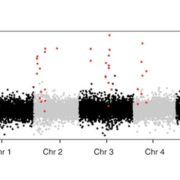
Evolution of transposon-encoded anti-silencing factors in Arabidopsis ($)
Blog, Plant Science Research Weekly, Research, Research BlogTransposable elements (TEs) are a major component of eukaryotic genomes. Their activity is silenced by epigenetic mechanisms such as chromatin modifications and DNA methylation in order to avoid deleterious effects on host genome stability. Nevertheless, how TEs overcome silencing by the host and propagate…
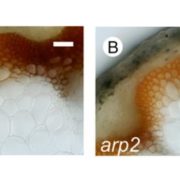
What We're Reading: January 5th
Blog, Research, Research Blog, WWR Full PostGuest Editor: Alecia Biel
Alecia is a graduate student at The Ohio State University in the US and has been a Plantae Fellow since September 2017. Her research focuses on elucidating hormone signaling pathways and the role of the nucleus during this process, particularly throughout plant abiotic…

KNS4/UPEX1: A Type II Arabinogalactan β-(1,3)-Galactosyltransferase Required for Pollen Exine Development
Blog, Plant Science Research Weekly, Research, Research BlogPollen is an essential component in angiosperm reproduction. Pollen grains are surrounded by a highly resistant wall called exine which enables survival of the male gametes in adverse environmental conditions. Suzuki et al. examined the contribution of an Arabinogalactan β-(1,3)-Galactosyltransferase…
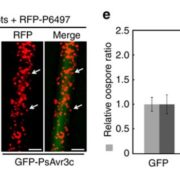
An oomycete plant pathogen reprograms host pre-mRNA splicing to subvert immunity
Blog, Plant Science Research Weekly, Research, Research BlogPhytopthora sojae poses a serious threat to soybean production world-wide. This oomycete pathogen has a wide arsenal of effector proteins, some of which have been functionally characterized for their virulence role. Huang et al. characterized and demonstrated the functional role of an avirulence effector…
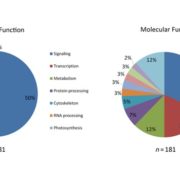
Oh, the places they’ll go! A survey of phytopathogen effectors and their host targets ($)
Blog, Plant Science Research Weekly, Research, Research BlogAll phytopathogens encode for a toolbox of secreted proteins called ‘effectors’ that promote disease formation in the best possible way. Effectors are either acting in the apoplastic space or are translocated to the host cell to target diverse processes and modulate the host using enzymatic activities.…
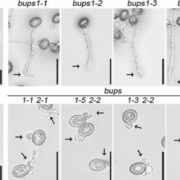
Arabidopsis pollen tube integrity and sperm release are regulated by RALF-mediated signaling
Blog, Plant Science Research Weekly, Research, Research BlogSuccessful fertilization in plants requires sperm cells (SCs) to be carried along the growing pollen tube (PT) until reaching the female gametophyte where the PT then bursts to release the SCs. One challenge PTs must overcome in order to achieve fertilization is deciding to rupture or not to rupture.…
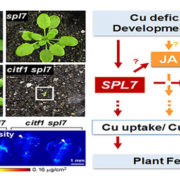
Anthers Crave Copper
Research, The Plant Cell, The Plant Cell: In a NutshellYan et al. searched for proteins that regulate the delivery of the micronutrient copper to flowers to ensure successful reproduction https://doi.org/10.1105/tpc.17.00363
By Jiapei Yan, Ju-Chen Chia, and Olena Vatamaniuk
Background: Global food security and the demand for high-yielding grain crops…
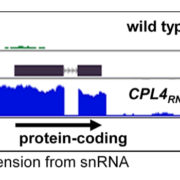
Transcriptional Switching Makes New Messages
Research, The Plant Cell, The Plant Cell: In a NutshellFukudome et al. explore the significance of Pol II C-terminal phosphorylation https://doi.org/10.1105/tpc.17.00331
By Akihito Fukudome and Hisashi Koiwa
Background: In animals and plants, gene expression begins with an enzyme called RNA polymerase II (Pol II), which produces ribonucleic acid (RNA)…
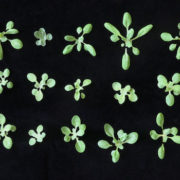
Multiple Mediator Subunits Impact Metabolism
Research, The Plant Cell, The Plant Cell: In a NutshellDolan et al. examine how a complex that regulates gene expression alters the production of phenylpropanoids https://doi.org/10.1105/tpc.17.00282
By Whitney Dolan and Clint Chapple
Background: Plants produce a vast array of compounds known as phenylpropanoids from the amino acid phenylalanine.…

